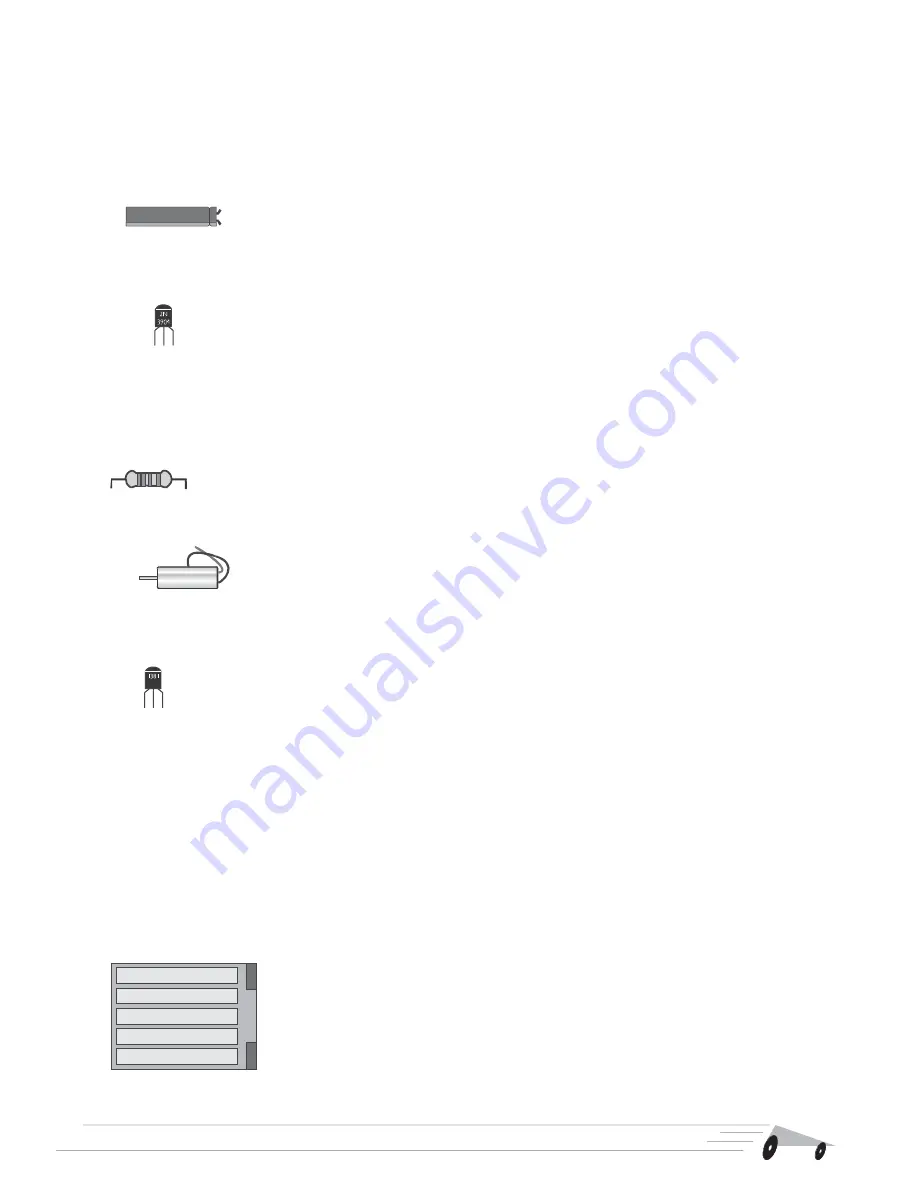
Circuit Overview
3
Gold Cap 2.5V 0.33F
The heart and soul of the SolarSpeeder is the high-performance Solarengine. The three
components that are most responsible for the increased performance of the Solarengine are the
0.33 Farad capacitor, the 1381 trigger, and the coreless motor.
The 0.33F storage capacitor is
strong for its size. To put it in
perspective, this storage cell holds 100 times the power of regular capacitors 5 times the physical
size. These capacitors are specially designed for low-voltage, high power applications - perfect for
Solarollers!
The transistors are the actual electronic switches that route the power from the
storage capacitor to the motor. The transistor’s left and right legs (the “emitter” and “collector”)
are the actual pathways for the majority of the current, while the middle leg (the “base”) is where
you put the tiny signal current to turn the transistor on. The SolarSpeeder uses 2 types of
transistors, an NPN (2n3904), and a PNP (2n3906). The only difference is that one is turned on
by current being pushed into it, and the other by pulling the current out.
The resistor is simply an electrical constrictor, which
the flow of electrons. In
the SolarSpeeder kit, it is used to divide the current between the transistor switches and the
motor.
The coreless motor is a very small, efficient device that is specifically
designed to run at approximately 1.5 volts. Since the Solarengine is designed to run at a maximum
of 2.5 volts, this places the motor almost exactly in the range we want it to run. And being so small
and compact, it is ideal for this BEAM application.
The 1381 voltage trigger is a small three pin integrated chip (IC) that looks much
like a transistor. It was originally designed to detect low voltage levels in the batteries of portable
electronic devices, like cellular telephones and portable computers. It uses very little power to
monitor the voltage, making it much more efficient than older trigger devices like zener diodes or
flashing LEDs.
The 1381 voltage trigger makes your SolarSpeeder wait until there is sufficient charge stored
up in the 0.33 Farad capacitor before it starts. This means that you can expect to get much more
action in direct sunlight than under an incandescent or halogen desk-lamp. This doesn’t mean that
you are restricted to placing it under concentrated light, as your SolarSpeeder will be able to work
under light levels suitable for reading (but you will have to be patient).
The solarcell converts light energy into electrical energy. Although not
very powerful (about as strong as a watch battery), they have a very long
lifetime, up to 20 years. The solarcell included with your kit is designed to
generate about 2.9V at 16 milliamperes.
very
resists


































